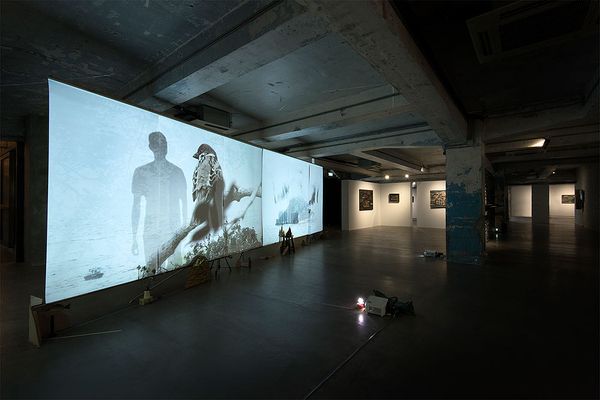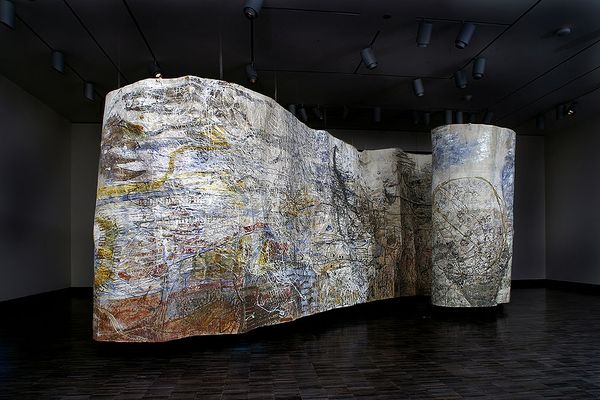Located in the heart of San Francisco, the Asian Art Museum is home to one of the most comprehensive Asian art collections in the world. Abby Chen, Head of Contemporary Art, discusses the museum’s expansion and renovation, and the debut of an immersive, multi-sensory dreamscape created by teamLab.
This article originally appeared on Phillips.
The Asian Art Museum will soon reopen to reveal an impressive expansion and renovation. What are you most excited to see in the new space?
I’m most excited to feel the new energy of the space both inside and outside. I’m excited to see how our audiences create that energy as they flow through the new spaces. This idea of flow was one of the key components of the transformation: a terrace, new lobbies, even new doors that open into new galleries. The building is connected now in a way that we hope reinforces how we hope our audiences make connections, too. These are connections between artworks, between cultures, between time periods. It’s really a unique space that represents three distinct architectural styles, too, and each style reflects the different ways Asian art has been collected and presented in the West. Shortly after we open, these spaces and artworks are going to start working together for the first time. With our historic and contemporary collection and our new commissions, the transformation underscores how the museum is stretching, in both senses of the word: reaching for something new, but also flexing its strengths.

Abby Chen, Head of Contemporary Art. Source: Asian Art Museum of San Francisco.
You work very closely with artists. Can you speak to one that is creating work that you find to be particularly relevant for this moment?
On our Hyde Street Art Wall, at the pedestrian level of our new Akiko Yamazaki and Jerry Yang Pavilion, we have a commissioned mural from Bay Area-based artist Jenifer K Wofford called Pattern Recognition. This artwork is colorful and full of pop energy, calling out in bubbles the names of important 20th century Asian American artists like Carlos Villa and Bernice Bing who have historically been omitted from major museum exhibitions and collections. It’s a really satisfying and vibrant testimonial about the power of visibility and representation. Jenifer spent a lot of time exploring our collection to develop it, drawing on traditional motifs to create a kind of secret code, a code that’s embedded on the walls of the museum, and bringing the inside of the museum outside, making sometimes unknown, and often underrecognized artists visible again. It’s so relevant to this moment since it’s about access and engagement as much as impact. We need that energy and we need that knowledge.

Jenifer K Wofford, Pattern Recognition (detail), 2020. Source: Asian Art Museum of San Francisco.
The museum will soon host an immersive digital installation with teamLab. Can you speak to the inspiration behind this collaboration, and tell us a bit more about the project?
Because of the pandemic teamLab has been postponed until summer of 2021. We actually have other upcoming collaborations we’re really excited about, especially those featured on our new East West Bank Art Terrace. We have sculptures from universal names like Ai Wei Wei, as well as local and international artists like Pinaree Sanpitak, Jas Charanjiva, and Ala Ebtekar, who create wonderful juxtapositions with each other. In that respect, the terrace is a conversation starter and a breath of fresh air—assuming the fires are out when it opens!
If the terrace is not as usable because of fires, I feel this pushes us to think hard about how else the museum can be relevant to our community—to artists and to audiences. It’s kind of an alternate reality: you’re inside hiding from the fires which means hiding from the natural world. With the pandemic, the museum already became a closed space, a filtered space, and the terrace is supposed to offer a relief valve of going outside. Both are a kind of sanctuary. But right now, with the smoke, both the outside and the inside are closing in. Whether the terrace is open or not, the museum offers you a chance to confront that alternating reality, to question what it means. The whole space becomes a mechanism for framing or reframing how we think and experience what’s happening.

Lam Tung Pang, A Day of Two Suns, 2019. Courtesy of the artist and Blindspot Gallery.
In today’s digital era, how do you see the digital forum addressing the greater needs of the museum and its engagement with the public?
Traditionally museums tend to prioritize objects. The digital dimension gives you the possibility of expanding museums past the idea of being a depository facility. The pandemic demanded that we pivot to being 100% virtual to keep up our engagement, and I think our digital initiatives ultimately showed what this museum stands for: breaking down barriers between art and audience, and inviting everyone to participate in critical conversations across the globe. But what we’re also very excited about or really what we’re discovering is that through technology the museum can keep the living experience alive, continuously.
People think digital still privileges the object, since it gives you a mediated way of viewing it up close, like with our Google Arts and Culture collaboration. But contemporary art operates outside that context, since so much of it doesn’t rely on displaying something under glass—be it a vitrine or your screen. AI, VR, gaming, these use digital to expand the experience, to connect you and others more closely with what the artist is trying to express or question with their work. In some ways tech and coding are the “crafts” of the 21st century, so it’s no surprise that we’re moving them into galleries for interrogation, study, and appreciation—they’re already permeating our lives.

Jayashree Chakravarty, Personal Space, 2001. Source: Asian Art Museum of San Francisco.
Which exhibition or artist project are you most looking forward to tackling in this next year?
AC: We finally have a gallery dedicated to showcasing the museum’s contemporary collection. We haven’t had this before. The inaugural exhibition in early 2021 is called Memento and it’s not only the debut of the repurposed gallery, but the debut of two artists in conversation together, and their debut together in an Asian art museum. We’re the first North American museum to collect works from these artists, Personal Space from 2001 by Jayashree Chakravarty and A day of two Suns from 2019 by Lam Tung Pang.
Can you tell me more about those works?
They’re architectural‐scale, multimedia ruminations on memory and intent, and how these inform our experience of urban space. These works feel so relevant right now, especially because they’re coming from what, in the art world, are kind of under‐the radar cities—Calcutta and Hong Kong. Memento recenters the conversation we’re having about who occupies urban space and how the politics of this shapes who we (think) we are. This debut is paving the way for an upcoming Carlos Villa retrospective in 2021 that we hope is going to change the conversation we’re having in this country about modern and contemporary art, who gets to be an artist and what kind of art they make, and refocuses it on still critical topics like multicultural liberation, self‐construction, even the origin myths that sustain and inspire us. It highlights how versatile “contemporary” art is.



